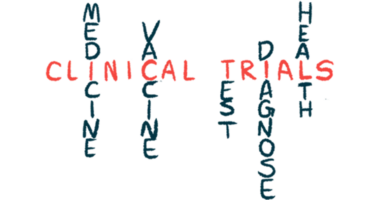Final guidance issued for Altuvoct as severe hemophilia A treatment
U.K.’s public healthcare system is now expected to fund the therapy

The National Institute for Health and Care Excellence (NICE) has issued a final guidance recommending the use of Altuvoct (efanesoctocog alfa) in England and Wales as an option for people with severe hemophilia A, ages 2 and older.
The National Health Service, the U.K.’s public healthcare system, is now expected to fund the treatment.
“This positive recommendation from NICE is a significant moment for people living with severe hemophilia A in the U.K.,” Sharon Hall, general manager at Sobi UK and Ireland, said in a company press release. “With the potential to significantly improve treatment outcomes and treatment burden, we are excited about the positive impact this treatment could have for those living with severe hemophilia A as well as their families and loved ones.”
The guidance states that Altuvoct, which was developed by Sobi along with Sanofi, may effectively control bleeds with less frequent dosing, providing potential benefits as a clinically effective treatment option and allowing for a cost-effective use of NHS resources.
Benefits of Altuvoct treatment
“The increased level of protection [Altuvoct] potentially provides, along with less frequent infusions should give people with this condition far more peace of mind and, hopefully, increase their ability to live a full and active life,” said Clive Smith, president of the Haemophilia Society, who also has severe hemophilia A.
Hemophilia A is caused by mutations in the F8 gene that impair the production or function of factor VIII (FVIII), a protein involved in blood clotting. This leads to episodes of excessive bleeding following an injury or trauma and spontaneous bleeds in people with severe disease.
Standard treatment generally involves using replacement therapies, which supply a working version of the missing or dysfunctional protein to treat or prevent bleeds.
“Despite improvements in hemophilia management over the last 50 years, people living with hemophilia A continue to experience life-threatening bleeds and joint bleeding resulting in pain, loss of function, and impaired work and societal participation,” Hall said.
Altuvoct, which is sold as Altuviiio in the U.S., is a new type of replacement therapy that contains a lab-made version of FVIII fused to a fragment of another clotting protein called von Willebrand factor, which helps stabilize and prevent its degradation. The therapy also incorporates two other modifications that allows it to stay active in the bloodstream longer, letting it be given less frequently to prevent bleeds.
The therapy’s approval in the U.K. was based on data from the Phase 3 XTEND-1 trial (NCT04161495) that enrolled 159 people with severe hemophilia A, ages 12 and older. The data showed that 65% of patients receiving weekly prophylactic injections of Altuvoct had no bleeding episodes over a year and a low incidence of bleeds was seen in the remaining 35%. When used on-demand, a single dose effectively resolved most bleeding episodes.
The Phase 3 XTEND-Kids trial (NCT04759131), which enrolled children younger than 12 with severe hemophilia A, saw similar results.







